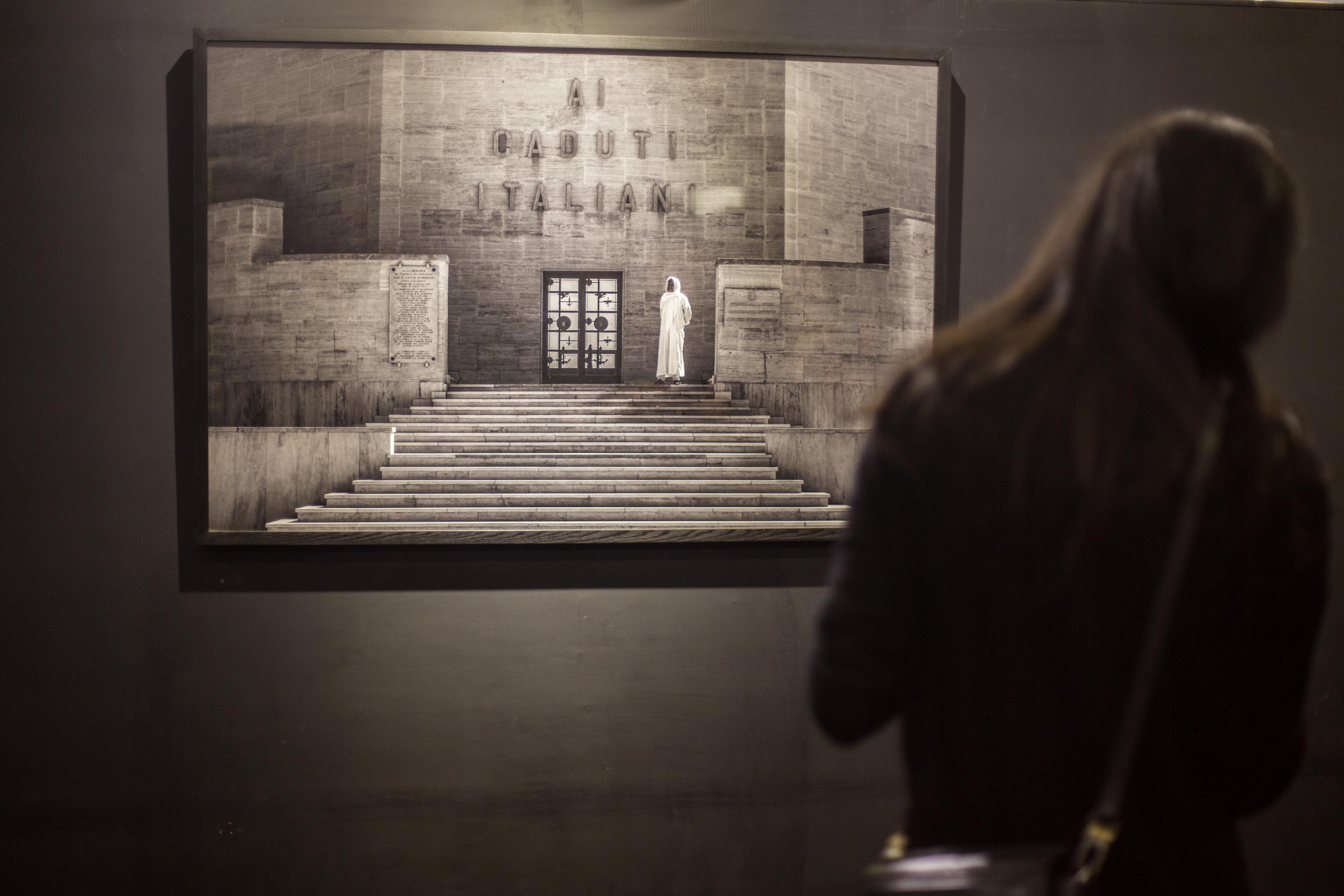“Documenting places, memories, and people, that’s what I want to do in this exhibition,” said Egyptian photographer Romany Hafez about his first photography exhibition “Spaces, Beginnings and Memories”.
Hafez launched his first photography exhibition on Tuesday, where he featured the places he felt connected to. In Galleria40’s Culture Lab and Designers Boulevard, Hafez documented a journey of three years capturing the places that left special marks in his heart, relating them to humans and memories that are “irreplaceable”.
The venue displays a range of black and white portraits that were taken during his journey all across Egypt where he followed his passion.
The exhibition is divided into sections, each taken from Egypt’s most authentic spots. The main themes display human traces and the places that once witnessed human lives and experiences.
“I have followed this photography line for 17 years,” Hafez told Daily News Egypt, “These portraits reflect my feelings regarding the places I have visited and felt captured by their shine.”
From his point of view, each place people visit provides them with a certain feeling, “some give you an impression of mystery while others shine with warmth and relaxation,” Hafez explained.
One of the displayed portraits features abandoned, time-worn places, with cracked walls, broken windows, and a ceiling falling apart, while the remains of human existence appear with shoes and broken toys left behind.
“I wanted to document the relationship between humans and places through the traces they imprint in them. The more places I visited, the more I felt the urge to visualise my feelings towards them in photographs,” Hafez added.
Along the portraits, captions of Hafez’s diaries about these places were written. As for the time, the photographer documented the passage of time through the carved memories people have in certain places.
In his exhibition, Hafez presented places on a larger scale than the most common ones, which is walls and buildings. Featuring humans body parts strongly attached to objects was another definition of “spaces” that Hafez wanted to capture.
“A place is not always a building, sometimes you meet a person and instantly feel ‘I am home!’,” Hafez added.
The overriding theme and technique of the exhibition is basics; basics in photography techniques as well as places.
Going back to the basics of photography, “I mainly draw the black and white photos with light. This is the technique I use in my exhibition,” he explained.
Going back to basics is also what led Hafez to focus on places, “because everyone’s life started somewhere and will end somewhere.”
The photographs force audiences to leave reality behind, losing the sense of time and place to draw their own world of realms and intimacy.
“I try to touch and communicate with people through the feelings I capture in my portraits,” he said.
In a narrow corner of the exhibition, small photographs surrounded with large white frames were showcased.
“I consider this exhibition a tour of my diaries and these portraits are the places that are the closest to my heart and the ones that witnessed some of my huge life events. Despite their intimate place in my heart that leads me to keep them hidden from peoples’ eyes, I couldn’t visualise my feelings without having them included,” he concluded.




